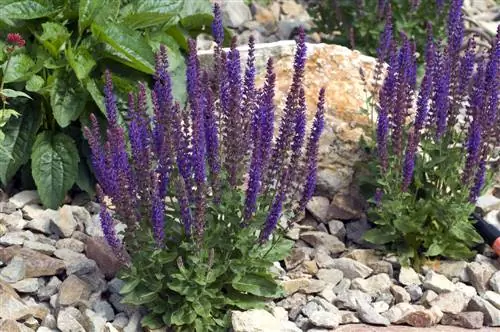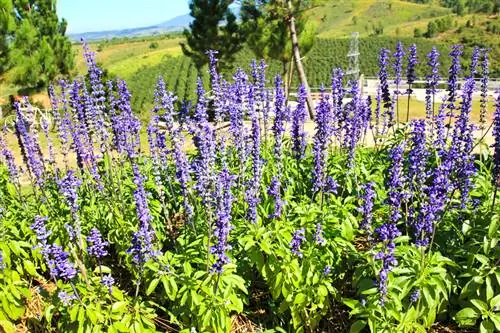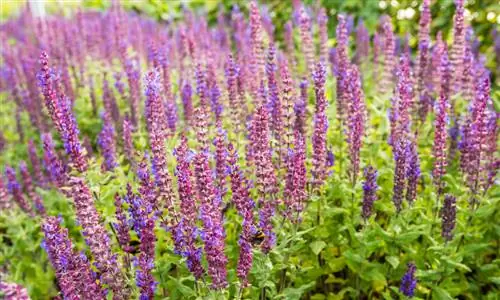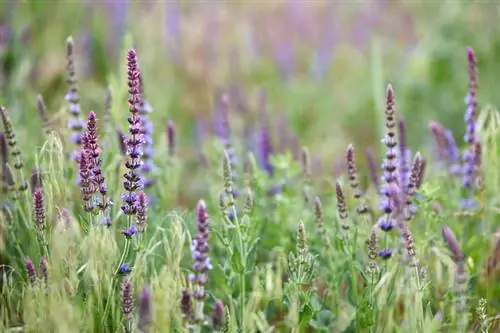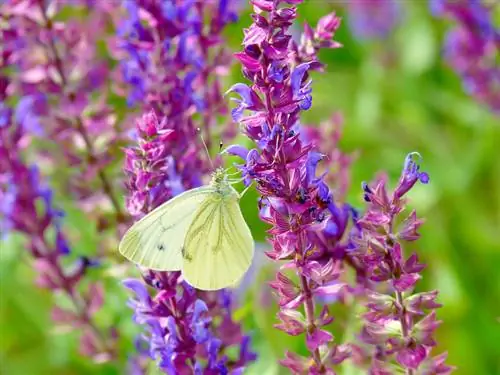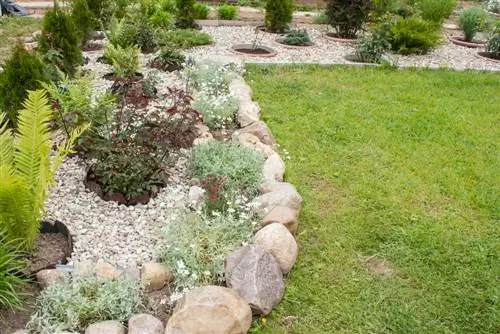- Author admin [email protected].
- Public 2023-12-16 16:46.
- Last modified 2025-01-23 11:22.
The steppe sage (Salvia nemorosa) is one of the particularly attractive flowering plants. It feels at home in perennial or herb beds and between roses. To ensure it thrives, it is important to ensure there is sufficient distance from neighboring plants when planting.
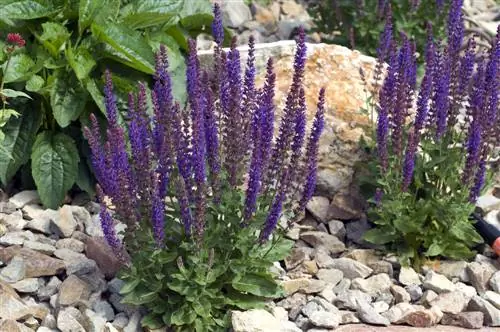
How large should the planting distance be for steppe sage?
The ideal planting distance for steppe sage (Salvia nemorosa) is at least 25 centimeters to allow he althy growth and leave space for the final size of the plants. After dividing the plant, this distance should also be maintained.
At what planting distance should steppe sage be planted?
For flowering sage, the planting distance should be at least 25 centimeters. This range results from half the value of the final size of the plants. Depending on the variety, steppe sage grows to a height of 50 to 60 centimeters.
How densely you plant the plants ultimately also depends on how quickly gaps between the perennial types should close and how far the perennials that form runners are allowed to spread later.
Why is planting distance so important for steppe sage?
If you place the flowering sage too close to the neighboring perennials, the plants will crowd each other after a short time. That's why it's so important to take the final size of all plants into account when planning a bed.
The following planting distances should not be less than:
- Tall leading plants: 50 to 60 centimeters
- Group perennials: 30 to 40 centimeters
- Scattered plants: 20 to 25 centimeters
However, this information can only be seen as a rule of thumb.
What planting distance should be maintained after division?
Even after division, you should maintain a planting distance of at least 25 centimeters.
Steps sage can be easily propagated using this care measure, which, among other things, promotes flowering. Put the individual parts back in, sprout them vigorously and reach the same height and width as the mother plant.
Tip
Steppe sage is valuable for bees
As it is a popular source of food for wild bees, honey bees and other insects, flowering sage is often cultivated in natural gardens. Its pretty flower candles harmonize wonderfully with ornamental grasses, flowering herbs or perennials such as yarrow.

